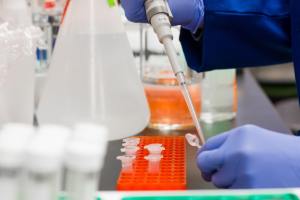What are PFAS? ANSWERED

PFAS have been in the news recently. Major news outlets have been reporting on them, calling them “forever chemicals.” Reports are saying that the contamination of our nation’s water supply goes further than we originally thought.
How dangerous are PFAS? What are they? What do you need to know?
Here’s the rundown.
What are PFAS?
PFAS stands for per- and polyfluoroalkyl substances. They are typically used for the production of non-stick items. These items range from non-stick cookware,packaging for food and firefighting foam. They have been in use since the 1940s.
Due to the chemical being man-made, they degrade slowly in a natural environment. This incredible longevity is why the media has dubbed them, “forever chemicals.” Recent testing has shown that these chemicals have appeared in far more of our water than was originally thought.
Worse still, the chemicals don’t just stick around in our water; they stick around in a person’s bloodstream. Millions of Americans carry PFAS in their bloodstream in recent estimations. In addition, according to the Water Quality Association, research on PFAS could cause “low infant birth weight, decreased fertility, elevated cholesterol, abnormal thyroid hormone levels, liver inflammation, weakening of the immune system, and testicular and kidney cancer.”
How can you avoid them?
Obviously then, these chemicals are something to be avoided. Ridding your water of them is not nearly as complex as you might think either. There may be a lot of information left to uncover on PFAS, but there are concrete steps that can be taken to protect yourself.
Fortunately, PFAS are only absorbed into the body through swallowing. Naturally then, avoiding them is all about what you decide to take into your body. Also, there have been several existing methods of water purification that are effective in filtering PFAS out. These methods include reverse osmosis, granular activated carbon, and anion exchange treatment. All three of these options have been on the market for some time, and are readily available to the consumer.
What is being done to solve this problem?
There is still a ways to resolve the issue of PFAS, but there is hope. With the recent spike in visibility, PFAS is being discussed and researched more than ever. One top scientific researcher called Battelle is digging in to learn more about how to eliminate these chemicals entirely. Battelle’s program manager, Amy Dindal, has been encouraged by the research thus far, saying, “We’re hoping to be able to share more very early in 2020.”
So whatever is happening now, the future is looking brighter by the day. If you’d like to learn more about PFAS, click on over to Water Quality Association’s article right here. If you’d like to learn more about reverse osmosis and how it works, click here to read our previous post.
Also feel free to check out our guide to water purification page!
Ready to Take Control of Your Water Supply?
Don’t wait for water shortages or unreliable sources to disrupt your life. With our Rainwater Harvesting systems, you can enjoy a sustainable, reliable, and completely self-sufficient water solution tailored to your home’s needs.

